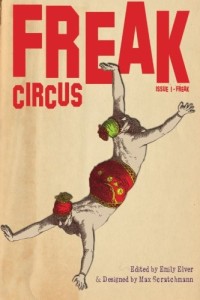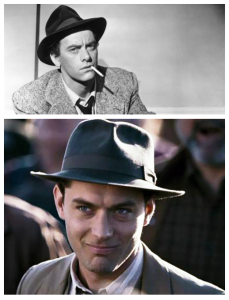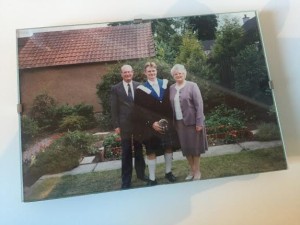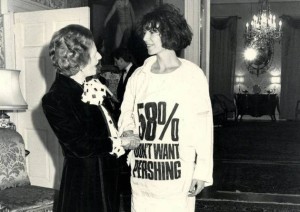Interested in Nerd Bait? Before digging into this week’s post, find out how The Wee Mermannie got the girl – deleted scenes from our Book Festival Gig are part of the bonus materials included in the first issue of the fabulous FREAK Circus!

The beautiful paperback artefact is here. The electronic version that includes the unexpurgated prose version of The Tail of The Wee Mermannie is here.
Right. Now. Back to the blog.
Last Monday, I noted neuroscientist David Eagleman’s remark that the idea that we are unitary people over time is merely an illusion of continuity.
The people each of us individually are at 10, 30, 40, “share the same name and some of the same memories, but we are quite different as a person.”
During the intervening week, I wrote a short story about a man who may – or may not – have lived a succession of quite different lives. Yet there are common themes in those lives. For example, in each case, the character’s father disappears from the scene in his early years.

It wasn’t until I was reading a passage in Robert Penn Warren’s Pulitzer-prize winning novel All the King’s Men last night that I realised that my fiction had been taking a sideways look at Eagleman’s theme….
Just over a third of the way through the book, the narrator – who has been relating his story in the first person – talks about his younger self in the third person:
This Jack Burden (of whom the present Jack Burden, Me, is a legal, biological, and perhaps even metaphysical continuator) lived in a slatternly apartment with two other graduate students…

Sex and relationships advice columnist Dan Savage is one of many in his field who’s taken note of the observation that, now that many of us live extended lives, we change – and our partners change – sufficiently over time that the person who is the one for us at 20 may not be the one for us at 30. Or 40. You get the idea. Science, art, and observation agree (for the purposes of this blog post): you’re not the same person you were.
Conversely, some of us get lucky and – for example – find partners who are sufficiently awesome that we want to stay with them for aaaaaages, and try to be good enough to make them feel the same way about us. Allowing for those variations, and finding them part of the intriguing tapestry of a life.

If that’s the case for a particular person, and the security of constancy is important, and that person’s taste in furniture is pretty constant, how does that person then express their individuality and adaptation? Tonsurary adjustment?
Dear Hipsters, You want to be unique, but instead you have all merged into the same man with glasses and a beard. pic.twitter.com/8hlfBxrrPN
— James Melville (@JamesMelville) October 22, 2015
No, I don’t think that going to work.
In just under two weeks, I’ll be graduating from the Creative Writing Masters programme at the University of Edinburgh. Much as I – or a person of whom I am the legal, biological, and perhaps even metaphysical continuator – graduated from Edinburgh as a Bachelor of Laws almost twenty years ago.

Aw, look at that wee guy, full of fresh-faced optimism! Try not to have a massive haemorrhagic stroke, fella!
Or, you know, do.
He’s quite chuffed to be wearing the white bow tie required by the Uni’s regulations, that he’s learned to tie himself. That’s the desire of youth to be perceived as experienced and sophisticated for you. Me? When I discovered, two decades later, that male graduates still have to wear white bow ties and wing collars, I was incensed! What if I can’t find previously-bought versions in the closet? I’m already having to rent the daft gown!
Really, I’d much rather just wear a t-shirt. And that’s a change. Even though Long-suffering Girlfriend of the Blog Beth will tell you that even in the course of a series of moves, it’s pretty tricky to get me to winnow the t-grain from the t-chaff.

In fact I don’t think I’ve worn a tie, outside of funerals, since we’ve moved to Edinburgh. Maybe the Goths are on to something in expressing themselves through their often awesome togs.
So, what does my extensive array of t-shirts indicate? Funny you should ask! BBC Radio 4’s The Why Factor was answering various questions about the t-shirt on the Fifth of November. Remember, remember, the Fifth of November, which just happens to be a holiday in Britain. That’s right – Nerd Bait Day!
The Why Factor is a fun little show. This episode runs 12 minutes. There was a similar one on commuting recently. But let’s make it even more potted….
By the common agreement of people who know about these sorts of things, a form of the t-shirt first came into existence by the end of the nineteenth century, as an undergarment – sometimes long-sleeved – worn under a military uniform. Then, by the time of World War II, men were wearing t-shirts more and more because because, when you take off your uniform, a t-shirt looks less down-dressed than a vest.
Then, after the war, the t-shirt begins to become a symbol of rebellion – not wearing a shirt, removing a layer, is kind of a precursor to something like Vivienne Westwood’s early-80s tactic of putting a bra outside outerwear. In the movies, you’d see Marlon Brando, James Dean, and early Paul Newman wearing t-shirts as a symbol of their rebellion.

T-shirts wnet on to be popularised by teens, and moved on from their association with underwear when other colours were added to the original grey and white palette. Then someone, somewhere, realised that a t-shirt can be a cheap and powerful way to convey a message….
One of the most iconic t-shirt designs has been a graphic that appears on everything from t-shirts to mugs to keyrings.

Yep. I♥NY. Milton Glaser, who came up with the design, tells The Why Factor that the reason that message on a shirt has such an effect, he thinks, is because wearing it on your body adds a level of intimacy that’s absent in other media – there’s no psychic or physical distance. The t-shirt is provocative. It’s worn on the body, it gets up close.
And it’s mobile and compact. Which means that when the t-shirt entered the world of high-fashion, Katherine Hamnett could pull this off at 10 Downing Street:

Wearing a t-shirt or putting a post on social media or writing a letter – or writing a blog post – might seem like the least a person can do. But no. Nothing is the least you can do. And opening a conversation might be the first step to normalising a new way to behave.
Though he didn’t make much money from it, Milton Glaser is proud of his design. He says he felt it was publicly and socially useful, not just another gig to make a living. He was happy to have some effect on human culture. Yet although he’s recently been working on a t-shirt with holes stamped in it behind which one can read the message No Guns For Nuts, he only occasionally wears a t-shirt himself, and never one with any printed material on it.
Why?
Because I don’t want people to know what I’m thinking.
That’s a message, though, isn’t it? A two-fingers – or, it being NY, a middle finger – to the sharing of experience, to discourse, to the potential for empathy. And apoplectic.me can’t be having that.
What does your t-shirt say?






I meant to comment last week on the whole mutability-of-the-self thing as it’s something I’m pretty interested in. Novel 1 explores that idea and has a passage that discusses it explicitly. The book also looks into how people change each other, especially in relationships, and how individuals are the sum of interactions with others, how we pick up elements of the ‘self’ from others, and how we leave elements of us in the ‘self’ of others. Plus opium and sex and stuff.
And today’s t-shirt is a silhouette of a bear riding a bicycle. I’m not sure what the message of that is.
Love that t-shirt so much, I’m going to lie and say I’m wearing my one of a cat DJing in an eye patch.
Opium and sex and stuff? I’m guessing there’s a definitely a protagonist who’s leaving elements of himself in others – would love to see that passage if you’d be happy to share….